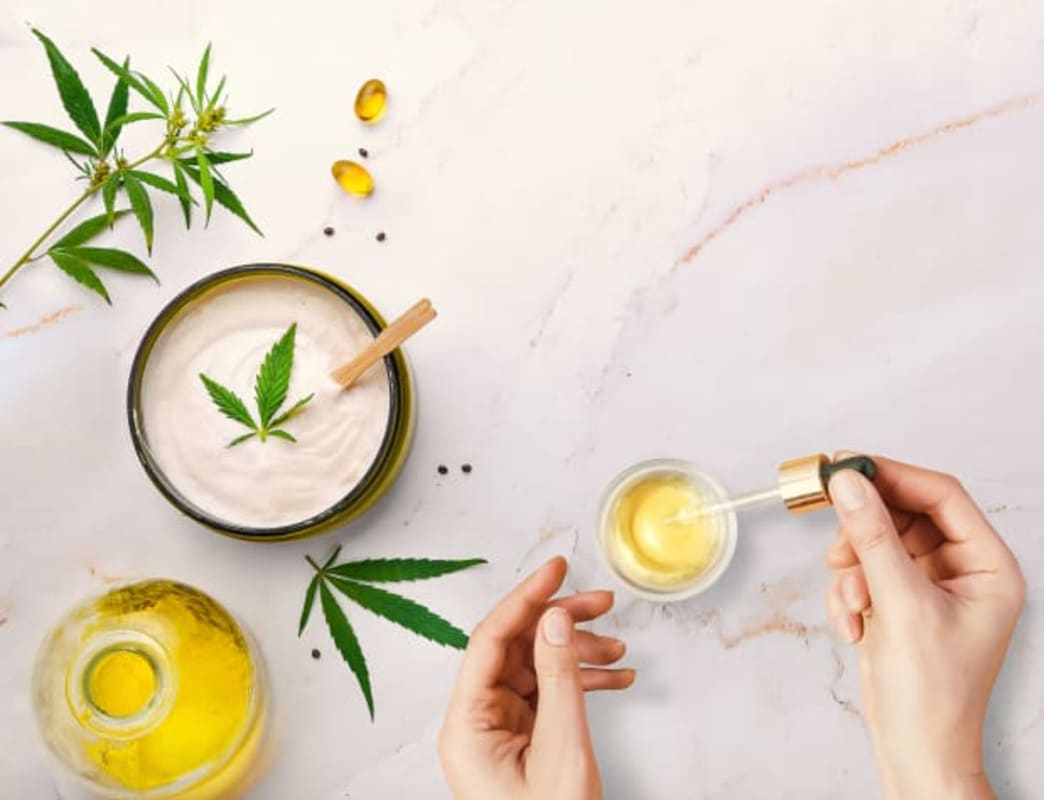
The Beauty Benefits of Hemp & CBD
The beauty ingredients getting the most buzz right now are hemp seed oil and CBD. Both are being infused into oils and lotions, shampoos and conditioners, face and body washes, face and hair masks, and mascara and other cosmetics. Savvy shoppers might notice hemp seed oil and CBD are listed interchangeably on ingredients labels. But is there a difference between the two?
Hemp seed oil is made from cold-pressed hemp seeds that grow on the Cannabis sativa plant. The thick oil is high in vitamin E and omega-3 and -6 fatty acids, making it an ideal moisturizing and conditioning ingredient for dry skin and hair. Hemp seed oil is antibacterial, doesn’t clog pores, and calms redness. And it also includes some protection against UV rays.
CBD, short for cannabidiol, is one of over 80 compounds called cannabinoids extracted from cannabis flowers. Topical CBD can help calm pain and reduce swelling. It first popped up in rubs and balm for overused muscles and achy joints. Then the beauty industry caught on. In addition to being an anti-inflammatory, CBD is a rich source of vitamins and essential fatty acids that keep skin nourished and moisturized. It can reduce the appearance of fine lines and wrinkles, and even help prevent them. And like hemp seed oil, it won’t clog pores.
Neither hemp seed oil nor CBD have psychoactive properties, and their placement in beauty products is the last step in destigmatizing the cannabis plant. Hemp production was banned throughout the country in 1937 as part of the criminalization of marijuana, but restrictions began to ease with the 2014 Farm Bill that allowed states to grow hemp as part of research pilot programs. The 2018 Farm Bill legalized hemp and removed its controlled substance designation.
Legally, THC, the psychoactive compound in marijuana, can’t be found in anything labeled “hemp.” In U.S. law, the difference between marijuana and hemp is very clear and has everything to do with THC content. If the plant has less than 0.3% THC, it’s considered hemp.
Savvy shoppers might also notice some beauty products tout “broad-spectrum CBD” on their labels. “Broad-spectrum CBD” products contain an array of beneficial cannabinoids, but zero THC. To create “broad-spectrum CBD,” the hemp plant must undergo additional processing to isolate and remove as much trace amounts of THC as possible, while preserving its therapeutic properties. Deciphering what’s in your hemp and CBD beauty products should now be a little easier.
Written by Sherrie Strausfogel for Better Nutrition and legally licensed through the Matcha publisher network. Please direct all licensing questions to legal@getmatcha.com.
